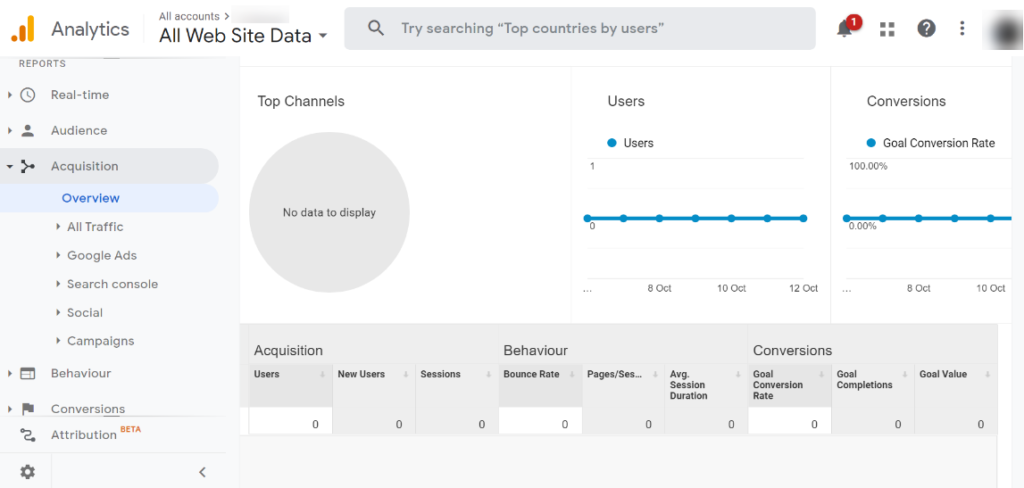Table of Contents
Launching your affiliate marketing program is only half the battle. You’ll need to stay on top of its performance and watch out for specific metrics that indicate that the effort you’ve invested is bringing adequate returns. To put it another way, measuring success using relevant affiliate program benchmarks is crucial.
However, awareness of the key indicators you should be on the lookout for can come in handy. To illustrate, say you have tons of signups for your program. Yet, it’s possible that the quality and niche relevance of a high percentage of your affiliates are simply not a good fit for your brand.
In this article, we’ll discuss why it’s important to regularly assess the health of your affiliate marketing program. Then, we’ll look at three affiliate program benchmarks you can use as points of reference. Let’s get to it!
Why It’s Vital to Assess the Health of Your Affiliate Marketing Program
Continually assessing the progress and performance of your affiliate program is crucial to ensuring its long-term success. As we mentioned earlier, although it may seem that all is well when you’re consistently receiving signups, the quality of some partners may not be up to par. For instance, they might not be well-established within your niche, in which case they may be unable to generate targeted traffic.
Tracking and assessing the performance of your program can also mean examining it from the perspective of your marketing partners. This can help to inform you about their overall experience. For example, it may lead you to eliminate obstacles that may cause loss of motivation, such as an overly-involved signup process.
Overall, tracking the effectiveness of your affiliate marketing program will help you see what is going well and what can be improved. This can potentially lead to increased revenue and long-term sustainability.
3 Benchmarks of a Healthy Affiliate Program
Although there are several key performance indicators (KPIs) you can track over the lifetime of your affiliate marketing program, some are more relevant than others. Let’s take a look at three of these.
1. You Have at Least an Average Conversion Rate
First on our list is your average conversion rate. This metric measures the effectiveness of each affiliate, and is defined as the percentage of visitors from advertising partners’ traffic that converts. This can be signing up for emails, filling out opt-in forms, or purchasing a product.
For example, if your total number of visitors equals 1,000, and 50 purchase products, then your conversion rate would be (50 / 1000) * 100, or five percent.
You can easily find and analyze this metric in Google Analytics by navigating to Acquisition > All Traffic > Source/Medium. Here, if you’ve previously set some goals, you can view the conversion rate for each of them:

Keeping your rates healthy is fundamental to the success of your affiliate program, as more conversions may mean more revenue. However, it’s also important to keep your expectations reasonable since average conversion rates tend to vary by industry.
Additionally, you’ll want to be on the lookout for overly high conversion rates (higher than 10%), as they might be an indication that your affiliates are engaging in less than stellar promotion practices that can damage your brand’s reputation and hurt your business.
Overall, maintaining a healthy conversion rate can be challenging. However, you can improve it by providing swipe copy to your affiliates to make it easier for them to create effective and targeted campaigns.
2. Your Active Affiliate Rate Is 10% or Higher
The next benchmark you want to consider keeping track of is your active affiliate rate. The basis for defining what “active” means varies between businesses. For example, some companies may consider a marketing partner active if they generate sales, whereas others may focus on just traffic.
Regardless of what “active” means for your business, what’s important is that your affiliates are helping you meet some type of goal through ongoing efforts. If you have 4,000 affiliates and a mere 20 generate traffic or sales, it should be cause for concern.
In short, your active affiliate rate will significantly impact your bottom-line, and you'd be better off with a trim, but effective list of marketing partners.
To calculate your active affiliate rate, you’ll need to divide the number of active marketing partners by the total number enrolled in your program. You can navigate to Easy Affiliate > Affiliates for an overview of your affiliates and their performance:

Keep in mind that the 80/20 principle often applies here. This guideline states that 80 percent of results come from 20 percent of the effort. In other words, your best performers may form only a very small portion of your total affiliate roster.
Overall, you want to aim to have at least a ten percent active affiliate rate. If yours is low, then you’ll want to take some concrete steps to improve it.
You can do this by making better promotional materials available and providing more enticing incentives. You may also consider converting existing customers into affiliates. Loyal users can be some of your best marketers if you aim to keep them engaged and satisfied.
3. Your Reversal Rates Are Suitably Low
Imagine this scenario – a customer makes a purchase on your website. However, they cancel almost as soon as they’ve placed the order. If this happened 40 percent of the time or more frequently, it would be cause for concern, and you would be smart to quickly find out the cause.
The above scenario is an illustration of reversal rates. This metric measures the percentage of reversed commissions or canceled orders that follow affiliate-credited transactions. Note that although low reversal rates are normal, if it’s too high as in the example above, it can deter potential affiliates from joining your program.
Some reasons for high reversal rates could be overselling potential buyers on bogus benefits. The quality of your products may also be lacking. Therefore, you’ll want to keep an eye on the merchandise, as well as the affiliates, with the highest reversal rates. This ensures that you can tackle any issues promptly.
Also, reversals can sometimes be caused by technical issues on your checkout page that prevent orders from going through completely. If this is the source of the problem, you’ll want to fix it immediately. This is where it can help to test out the entire buying process regularly to pick up on any errors.
Conclusion
Although you may have a huge line-up of marketing partners working for you, it may be possible that you have a quality problem or a high percentage of inactive affiliates. These are two among several scenarios that make it crucial to track the performance of your program over time.
You can potentially boost the success of your program by making sure that:
- You have at least an average conversion rate for your industry.
- Your active affiliate rate is ten percent or higher.
- Your reversal rates are suitably low.
Do you have any questions about the three benchmarks we’ve listed for measuring the health of your affiliate marketing program? Let us know in the comments section below!
If you liked this post, be sure to follow us on Twitter, Facebook, and LinkedIn! And don't forget to subscribe in the box below.



Leave a Reply